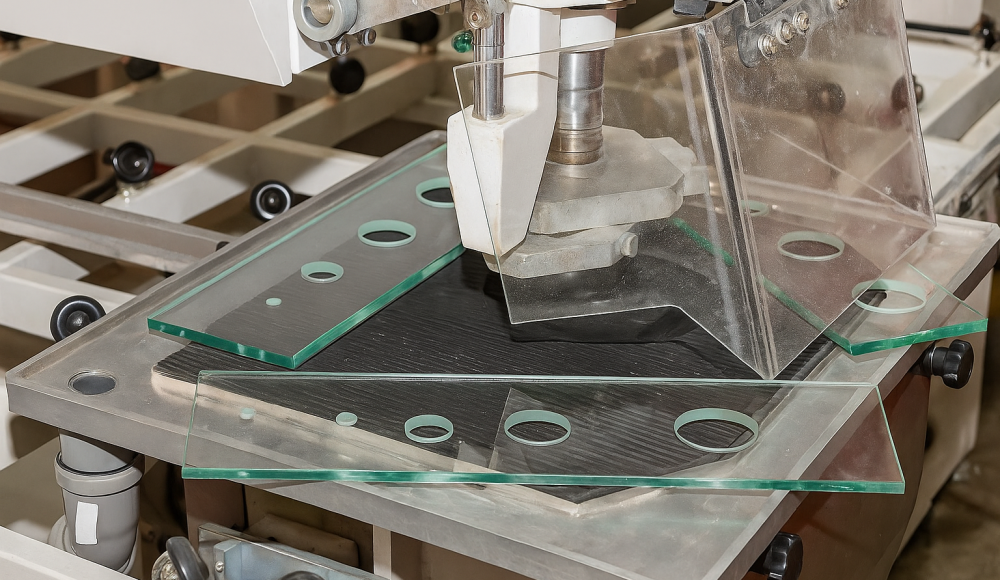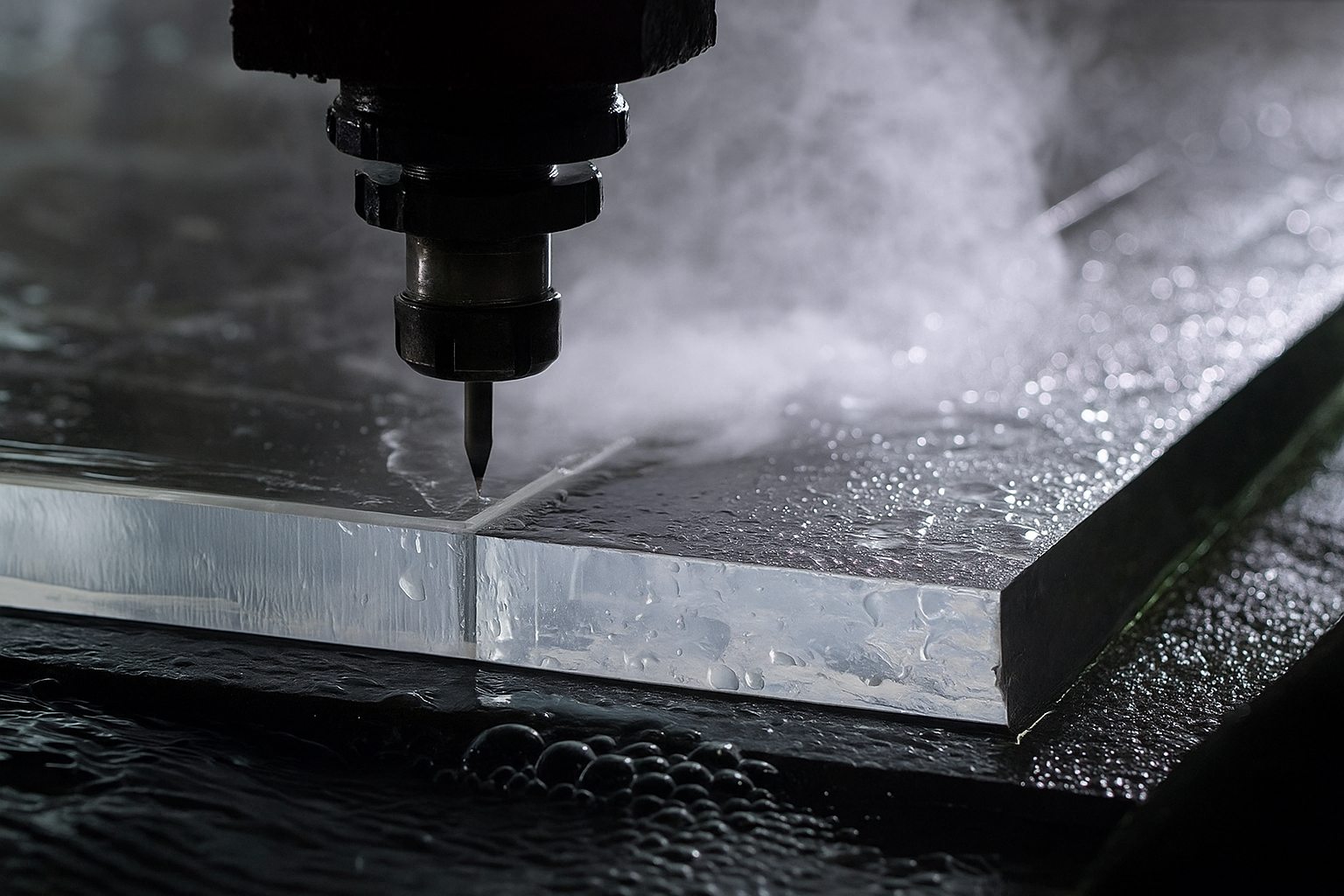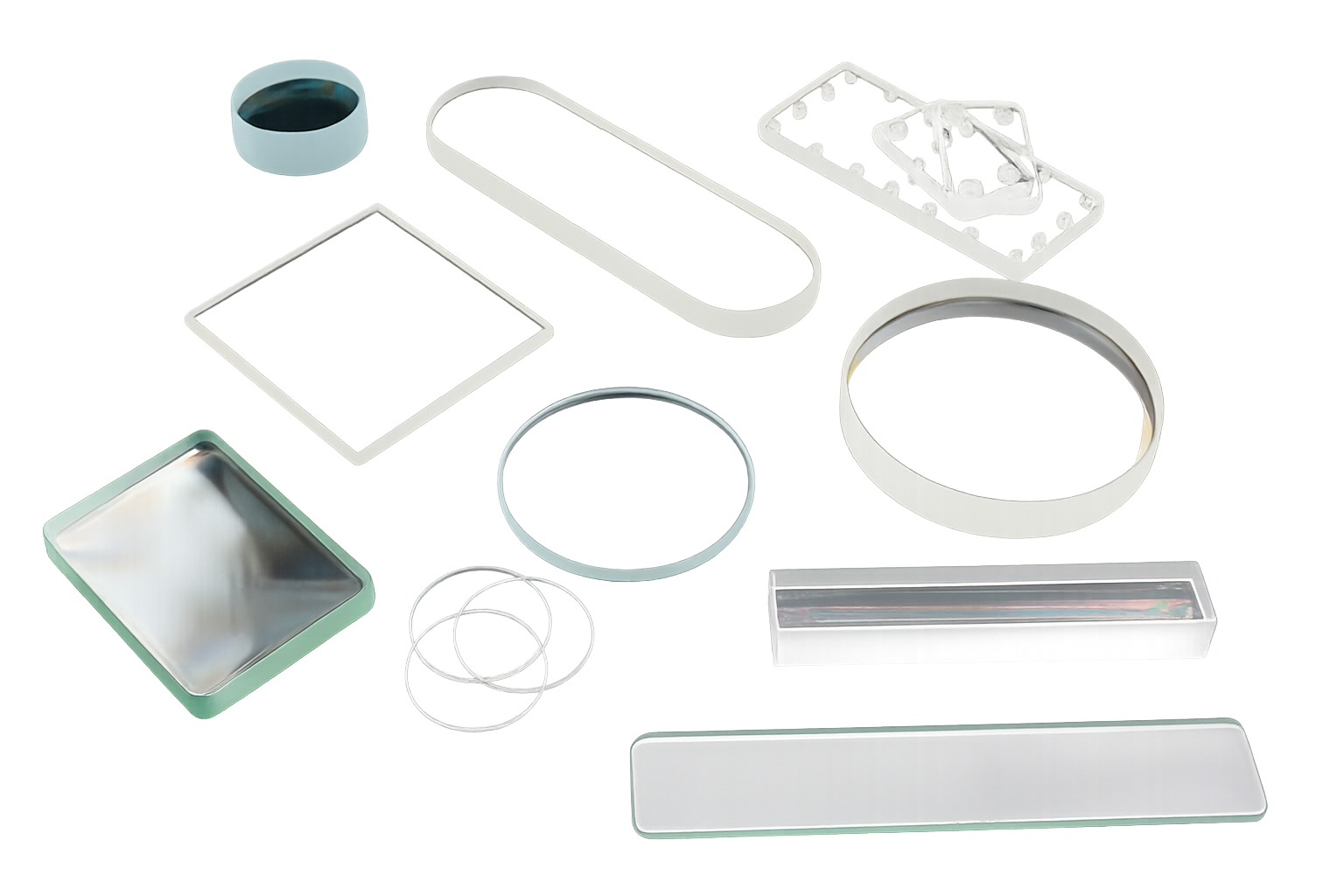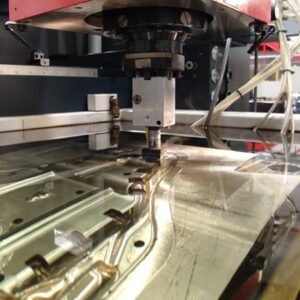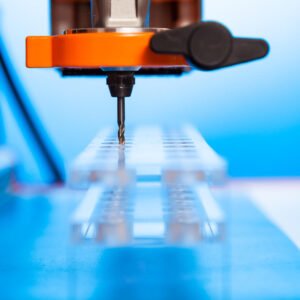A usinagem CNC de vidro revolucionou a maneira como os componentes de precisão são fabricados, permitindo que projetistas e engenheiros realizem geometrias complexas e tolerâncias restritas que antes eram impraticáveis ou impossíveis. De dispositivos microfluídicos a grandes painéis arquitetônicos, O vidro usinado em CNC oferece precisão excepcional, repetibilidade, e acabamento superficial. Este guia se aprofunda nos métodos, materiais, benefícios, e considerações sobre usinagem CNC de vidro, capacitando você a tomar decisões informadas para seu próximo projeto.
O vidro pode ser usinado CNC?
Sim – avanços na rigidez de máquinas-ferramenta, projeto do fuso, ferramentas, e o controle do processo agora tornam viável a usinagem de vidro CNC de maneira confiável. No entanto, a fragilidade e dureza inerentes ao vidro exigem técnicas e ferramentas especializadas para minimizar lascas, rachaduras, e desgaste da ferramenta. Com fixação adequada, entrega de refrigerante, e otimização de parâmetros, A usinagem CNC pode produzir cortes complexos, buracos, e texturas de superfície em painéis e componentes de vidro.
Como funciona a usinagem CNC de vidro?
A usinagem CNC de vidro segue o fluxo de trabalho padrão CAD → CAM → CNC, mas com adaptações críticas para o comportamento material.
CAD para CAM Workflow
Projeto & Tolerância
Crie modelos 3D em CAD, especificando dimensões geométricas e tolerâncias (GD&T).
Identifique superfícies críticas (por exemplo., faces ópticas) exigindo planicidade ou rugosidade submícron.
Geração de percurso
No software CAM, selecione caminhos de ferramenta apropriados (contornando, embolsar, perfuração).
Definir passo a passo, redução, taxas de alimentação, e velocidades do fuso otimizadas para remoção de vidro.
Configuração da máquina
Fixação
Use mandris a vácuo, almofadas adesivas, ou mandíbulas macias para apoiar o vidro sem induzir estresse.
Garanta um suporte uniforme para evitar vibrações e rachaduras.
Ferramentas & Fuso
Empregue fresas de topo com revestimento de diamante, exercícios, e ferramentas de moagem/rebarba.
Fusos de alta velocidade (≥ 30,000 RPM) reduzir as forças de corte e melhorar o acabamento superficial.
CoICONTE & Controle de poeira
O líquido refrigerante ou a microlubrificação minimizam o acúmulo de calor e eliminam os detritos.
Sistemas de extração integrados capturam o pó do vidro para evitar arranhões na superfície.
Operações de Usinagem
Passes de Desbaste
Comece com profundidades de corte conservadoras (por exemplo., 0.1–0,2 mm) em taxas de alimentação moderadas para remover suavemente o material a granel.
Passes de acabamento
Mude para reduções finas (≤ 0.05 milímetros) e avanço reduzido para atingir a rugosidade superficial desejada (< Rá 0.2 µm).
Monitoramento em processo
Use sensores de vibração e feedback acústico para detectar desgaste de ferramentas ou rachaduras em peças em tempo real.
Etapas pós-usinagem
Polimento
O polimento secundário com pastilhas diamantadas finas ou pasta pode melhorar ainda mais a clareza óptica.
Temperamento/Fortalecimento
O fortalecimento térmico ou químico aumenta a resistência, crítico para componentes de suporte de carga ou de segurança.
Inspeção final
Máquinas de medição por coordenadas (Cmms), interferômetros, e perfilômetros de superfície verificam especificações geométricas e de superfície.
Técnicas utilizadas na usinagem CNC de vidro
As propriedades únicas do vidro exigem um conjunto diversificado de técnicas de usinagem:
Fresagem & Contorno
Remove material para formar bordas, recessos, e formas 3D com fresas de topo diamantadas.
Perfuração & Tedioso
Cria furos precisos a partir de sub-0.5 mm a vários milímetros usando brocas e alargadores revestidos de diamante.
Gravação & Embolsando
Cortadores de diamante esculpem padrões decorativos, números de série, ou bolsos rasos para juntas.
Ranhura & Entalhamento
Forma canais estreitos para vedações ou recursos de montagem; crítico em aplicações de manuseio de fluidos.
Esmerilhamento & Laping
Técnicas de refinamento de superfície que trazem planicidade e rugosidade às tolerâncias ópticas.
Corte a jato de água (Sistemas Híbridos)
Cabeçote abrasivo de jato de água em plataforma CNC obtém perfis 2D sem estresse térmico.
Fortalecimento Térmico/Químico
Tratamentos pós-usinagem – banhos de troca iônica ou fornos de têmpera – aumentam a compressão superficial e a durabilidade.
Tipos de vidro adequados para usinagem CNC
| Tipo de vidro | Propriedades principais | Usos comuns |
| Borossilicato | Baixa expansão térmica, alta resistência química | Materiais de laboratório, óptica de precisão |
| Cal sodada | Econômico, usinável, força moderada | Painéis arquitetônicos, componentes decorativos |
| Sílica Fundida | Expansão ultrabaixa, alta clareza | Bolachas semicondutoras, óptica de alta potência |
| Aluminossilicato | Força elevada, boa estabilidade térmica | Telas de smartphones, capas de exibição duráveis |
| Vidro de chumbo | Alto índice de refração, denso | Lentes de precisão, prisma |
| Quartzo | Pureza excepcional, Transparência UV, alta resistência ao calor | Lâmpadas UV, janelas de processo de semicondutores |
Vantagens da usinagem CNC de vidro
Alta Precisão & Repetibilidade
Obtenha tolerâncias de ±10 µm consistentemente em todos os lotes.
Geometrias personalizadas complexas
Produzir cortes inferiores, microcanais, e superfícies de forma livre em uma única configuração.
Acabamento de superfície superior
Rá até 0.05 µm sem polimento manual extensivo.
Eficiência Material
Perda de corte e refugo minimizados por meio de percursos de ferramenta e agrupamento otimizados.
Automação & Segurança
O controle CNC reduz a exposição do operador a cacos de vidro; opções de carregamento automatizado aumentam o rendimento.
Limitações da usinagem CNC de vidro
Risco de fragilidade
Seções transversais finas (< 2 milímetros) e cantos apertados podem quebrar sob estresse.
Equipamento & Custo de ferramentas
Fusos de alta precisão e ferramentas diamantadas exigem um investimento de capital significativo.
Experiência do Operador
Requer treinamento especializado em comportamento de vidro, seleção de ferramentas, e ajuste de processos.
Aplicações de usinagem CNC de vidro
Óptica & Fotônica
Lentes, prisma, guias de onda, e elementos de modelagem de feixe.
Equipamento semicondutor
Substratos de wafer, janelas do alinhador de máscara, e capas protetoras.
Médico & Biotecnologia
Chips microfluídicos, lúmens do cateter, câmaras de slides de diagnóstico.
Aeroespacial & Defesa
Janelas de pressão, caixas de sensores, e viewports de alta temperatura.
Eletrônicos de consumo
Capas de tela sensível ao toque, capas de lentes de câmera, e peças decorativas de vidro.
Arquitetônico & Decorativo
Painéis de vidro gravado, luminárias, e instalações artísticas.
Considerações de custo
Despesas de capital
Máquina CNC com fuso de alta velocidade: $150,000–$500.000+.
Ferramentas revestidas de diamante: $100–$500 por cortador.
Custos Operacionais
Salários de operadores qualificados, refrigerante, Desgaste da ferramenta, e manutenção.
Economia de Volume
Volumes mais elevados compensam os custos de configuração; pequenas tiragens têm prêmio por peça.
Complexidade do design
Recursos complexos aumentam o tempo de ciclo; equilíbrio entre ambições de design e orçamento.
Comparação com outros métodos de fabricação de vidro
| Aspecto | Usinagem CNC | Corte a laser | Técnicas Manuais |
| Precisão | ±10 µm | ±50–100 µm | ±100–300 µm |
| 3Capacidade D | Contornos e cortes inferiores em 3D completos | Principalmente perfis 2D | Formas limitadas |
| Estresse térmico | Mínimo (com refrigerante) | Potenciais microfissuras | Baixo, mas inconsistente |
| Tempo de configuração | Moderado (Programação CAM) | Baixo | Muito baixo |
| Acabamento de superfície | Ra 0,05–0,2 µm | Ra 1-3 µm | Rá > 3 µm |
Selecionando um fornecedor de usinagem CNC de vidro
Equipamento & Certificações
Procure ISO 9001:2015, AS9100 para indústria aeroespacial, ou ISO/IEC 17025 para metrologia.
Experiência Técnica
Revise estudos de caso em óptica, médico, ou indústrias de semicondutores.
Controle de qualidade
Sondagem em processo, Inspeção CMM, interferometria, e perfilometria de superfície.
Tempo de espera & Capacidade
Confirme os recursos de rendimento e os planos de backup para execuções urgentes.
Serviços de pós-processamento
Polimento, temering, revestimento, e integrações de montagem.
Estudo de caso: Precisão máximaProcesso de usinagem CNC de vidro
Inspeção de entrada
Verifique o tipo de vidro, grossura, e pré-certificar planicidade com interferometria a laser.
Otimização do percurso
Use modelos CAM internos ajustados para mínimo envolvimento da ferramenta e controle de vibração.
Usinagem em vários estágios
Corte bruto em 20,000 RPM; terminar a passagem em 40,000 RPM com 1 μm redução.
Aprimoramento de superfície
Polimento opcional com pasta de diamante ou fortalecimento por troca iônica.
Controle de qualidade final & Embalagem
CMM e inspeção óptica; caixa personalizada com espuma antivibração.
Conclusão
A usinagem CNC de vidro preenche a lacuna entre a ambição do design e a capacidade de fabricação, desbloqueando feitos de precisão e complexidade que impulsionam a inovação em todos os setores. Ao entender as nuances da seleção de ferramentas, parâmetros de processo, e comportamento material, você pode aproveitar a usinagem CNC para produzir componentes de vidro que atendam aos mais rígidos padrões de desempenho e estética. Ao avaliar parceiros, priorizar conhecimento técnico, sistemas de qualidade, e um histórico comprovado na fabricação de vidro - como demonstrado pela Tops Precision - para garantir o sucesso do seu projeto, desde o protótipo até a produção.
Leia mais:
Serviços de usinagem de precisão

